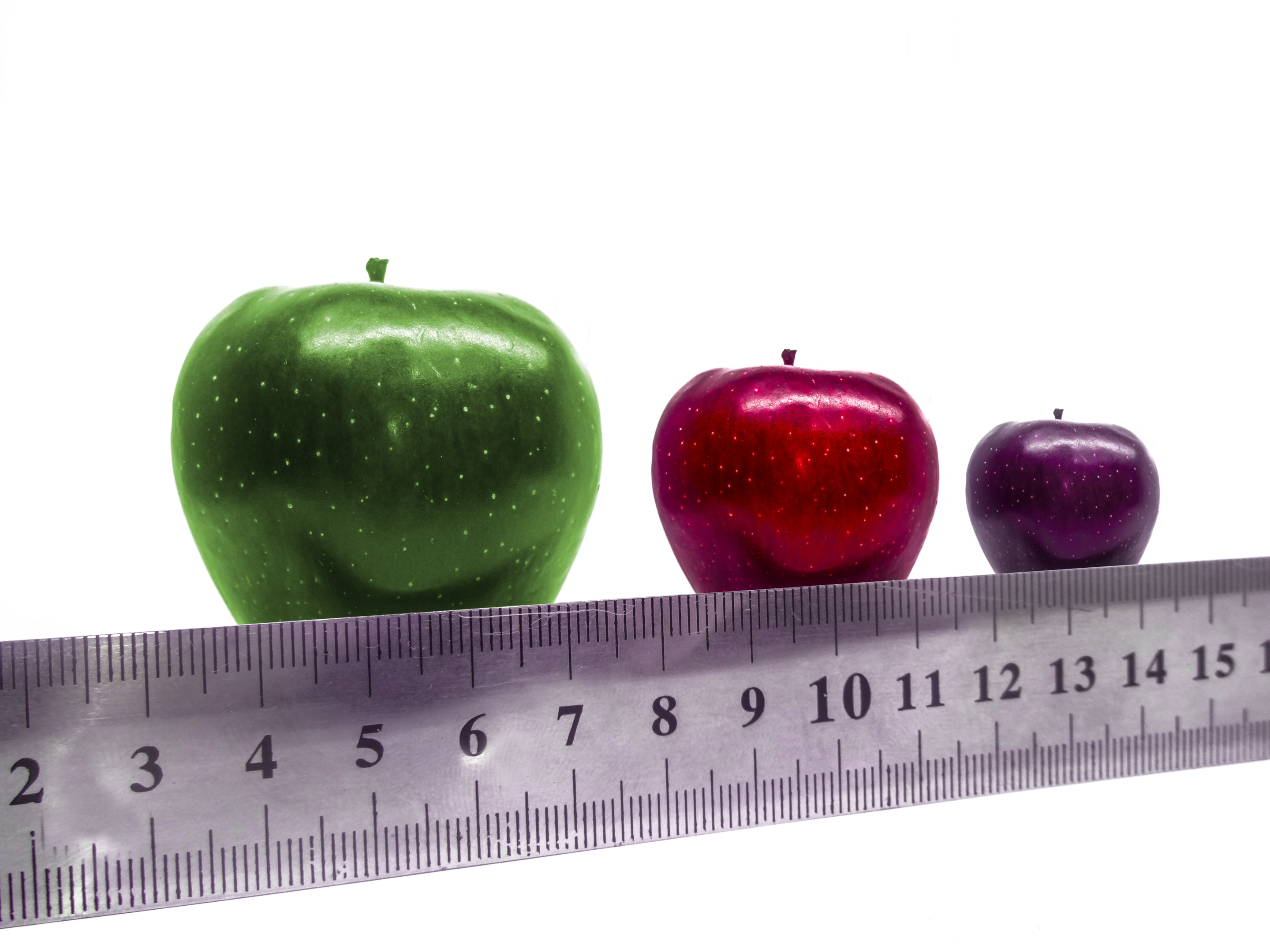The Startups Team
Of all the slides in a pitch deck, the Market Size slide is what potential investors use as a make-or-break decision. Our "Total Addressable Market" (which is often referred to as the "TAM Slide") is how we calculate the market size of our opportunity. Yet how we present the market size slide and how we do market sizing takes a special approach.

Why do Investors Care about Market Size Slides?
The one rate-limiting factor for a startup is the total addressable market. A startup cannot scale to a size that exceeds the number of potential customers it has in an overall market. Therefore, if an investor can easily see that the total market size for our business is $50 million, then they know even if we had zero competition, we could be no more than a $50 million company.
At which point an investor can take on a look at our TAM slide and see our opportunity is capped too low, even the most stunning pitch deck won't save us. So in our quest to create the perfect market size slide, we need to show we can get serious market share in a giant market.

What's the "Ideal" Total Addressable Market?
This is where the art of market sizing in our pitch deck comes into play. We want a total addressable market that's big enough to excite investors but also a serviceable obtainable market that we can actually make a dent in.
A basic rule of thumb is that we want our total addressable market in our pitch deck to end with "billions."
We're going to comb through market data, industry research, new market reports, and every other free download and database we can get our hands on. We'll run through top-down market sizing, a bottom-up approach, and every possible way we can manipulate the data.
But in the end, our perfect TAM slide will be a total market worth billions.

Why does the "perfect TAM slide" have to be "Billions"?
There are two concepts that startups have to understand when they want to calculate TAM in their pitch deck.
The first is that angel investors and venture capitalists need a market opportunity that can support a huge outcome such as a sale or IPO. They estimate that 80% of their investments will fail, and therefore they have a limited time to find 20% that will be such a breakout success that their revenue and outcome will make up for all the "bad bets."
The second is that the market opportunity needs to be enough for competition. If our market slides assume that the only way to scale to enough customers is to be the only product or service in our overall market, that's a huge red flag.

What is "TAM" (Total Addressable market) really?
The moment we start presenting our market slide to investors, all of them are going to ask "What's your TAM?" What investors are really asking is:
"What are the maximum number of customers who could potentially buy your product?"
The key to understanding market sizing is to know the difference between potential customers and actual customers.
Startups never reach 100% market share unless they have some kind of monopoly. Therefore the TAM not only includes those who would purchase our product, but also the value of all other purchases from our competition.
Example of Total Addressable Market
The Total Addressable Market for Uber is the $65 billion taxi industry. Anyone who would potentially ride in a taxi would likely be able to use Uber as an alternative.
On its face, this may look like some old-school top-down market sizing. But let's pick this apart a little bit so we can understand the that "top-down approach" is just the beginning.
If a Customer won't buy our Product, they are not in the Market Slide
Now let's refine that $65 billion market size slide in our pitch deck to be a little more realistic. We start with removing any category of customers that would invalidate them as part of our market share.
Anyone without a Mobile Phone
Uber requires users to have a mobile phone to hail a cab. Therefore, we would need to filter our TAM slide in our pitch deck to remove the percentage of the population that may not have a mobile phone. That may reduce our market by 10%, which we would use to calculate TAM at 10% less than total. We then calculate our $65 billion minus 10% = $58.5 billion.
Anyone outside of a Major Metro
Next, we may find that our most active markets are in major metropolitan areas, and once we extend to the suburbs or rural areas our unit economics break down. We could then do some basic demographic analysis to determine how much of our target population is outside of major metros. We may also conclude that it's not a limiting factor and choose to avoid this filter altogether.
Our goal isn't to find every possible filter, it's to make sure our market estimate considers the most obvious filters that an investor would likely apply.

99% of Founders get the Total Addressable Market Size slide Wrong
When you run a startup accelerator, you see a LOT of pitch decks, so you start to notice a pattern on things like the TAM slide. Most Founders make the same two mistakes:
Reason #1: Overshoot the Market Size
In most cases, we just estimate wrong. We keep thinking that the market has to be "as big as possible" so we scramble to prove that everyone in the world "could" be a customer. Our strategy should be to capture as large a market as we can, but more importantly, to communicate who our core customer is.
If we're a beverage company, we don't just take a top-down approach in our market size slide to predict our customer is "anyone who ingests liquid"! We need to filter that down to the business that we are in, which may be a carbonated tea, so anyone who doesn't historically fit that category isn't a potential customer.
Reason #2: We get Way too Specific
If being too broad is a problem in our estimate, so is being too narrow. Where we tend to miss on this part of the pitch deck is thinking only in terms of who our customer is today. We're often limited to how big our budget is, our current feature set of the product, or who we believe we can reach.
That's too narrow. We need to adjust our market sizing to start with who we can attract now but expand to who we could grow to in the future.
Using our beverage company example, being way too specific may be "Our TAM is everyone who enjoys tea in Columbus, Ohio." Yes, that may be who we're selling to now, but our local geographic area probably isn't a real limit on how big our market can be.

3 Step Process to a Perfect TAM Slide
We're going to apply a 3 step process to get to our perfect market size slide. This is just a matter of expanding the market and then applying filters.
Step 1: Use Adjacent Markets
Every new product draws money from an existing market. When Uber launched, the world didn't suddenly have more disposable income. Every new Uber passenger was spending money that would have otherwise gone to an incumbent transportation company - mostly taxis.
Sometimes our exact market (like the $65 billion taxi industry) is big enough to build a huge business out of. In other cases we have to demonstrate how we are going to pull customers (and their money!) from adjacent markets.
Example: Market Sizing for Uber
In this case of Uber, our "Taxi Industry" is our specific market. But we could also expand into public transportation (buses, subway) or even auto leasing. In our case, our industry is already big enough ($65 billion), but if in your case, you see the need to look into adjacent markets to sell into to increase the total addressable market, that makes perfect sense as well.
Step 2: Filter the Market Sizing down
Once we've taken a top-down approach toward making the market as big as possible, the next modification we'll make to our market slide is to filter that number back down.
Why Investors care how we Filter Market Size
Investors don't know exactly what our market size is, but they can tell when they see pitch decks that feature an absurd market size. What we're aiming for in our presentation is to show examples of how we applied common sense filters to our total addressable market.
What we want to avoid is having investors immediately react with "That's insane! You've counted way too many people in this market that aren't even remotely your target customer!"
Step 3: Grow into the TAM
Our last step will be to divide our TAM into two phases - our "Near Term" market, and our "Long Term" market. This will help us simultaneously demonstrate how large our potential market can be while also pointing to where we can make a dent in a near term market.
Phase 1: Start with a "Near Term Market"
We'll divide our TAM slide in two. First, we'll start with our "Near Term Market" which is where we will initially point our product or service. In the example of Uber, we may have started in a single market.
"Our Near Term Market for Uber will be the Seattle metropolitan area which is a $250m/year opportunity."
What's nice about this approach is that it syncs well with the amount of money we're likely raising (let's say $2m). Investors can "see" us starting to address that market and being to drive the business. Think of this as "establishing a beachhead" in our overall market.
Phase 2: Expand to the Total Addressable Market
The second aspect of our market slide will be the entire TAM, which we've explained throughout this lesson. This represents the maximum buying power of all customers regardless of whether they buy from us.
"Our Total Addressable Market is $65 billion per year which represents the current U.S. Taxi industry."
Investors will look at both aspects of this slide and easily understand our near-term and long-term prospects.

Final Thoughts
Building the perfect TAM slide is about being in the right ballpark and choosing a few of the right assumptions. We're never going to be 100% accurate since the exact data we need is rarely available in formative markets. As long as we are tackling a big market with the right filters, investors will respond favorably.
Find this article helpful?
This is just a small sample! Register to unlock our in-depth courses, hundreds of video courses, and a library of playbooks and articles to grow your startup fast. Let us Let us show you!
Submission confirms agreement to our Terms of Service and Privacy Policy.
No comments yet.
Start a Membership to join the discussion.
Already a member? Login